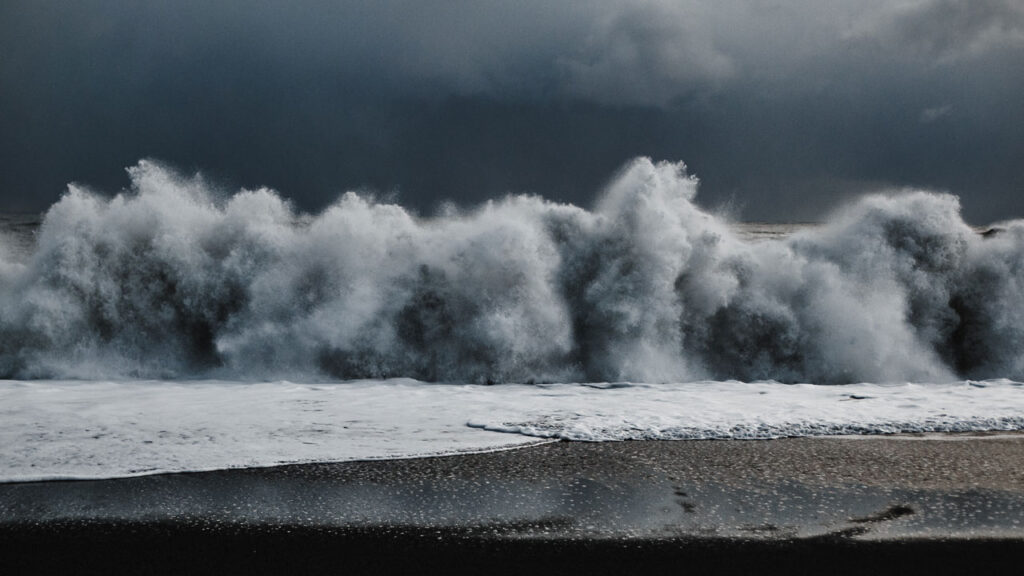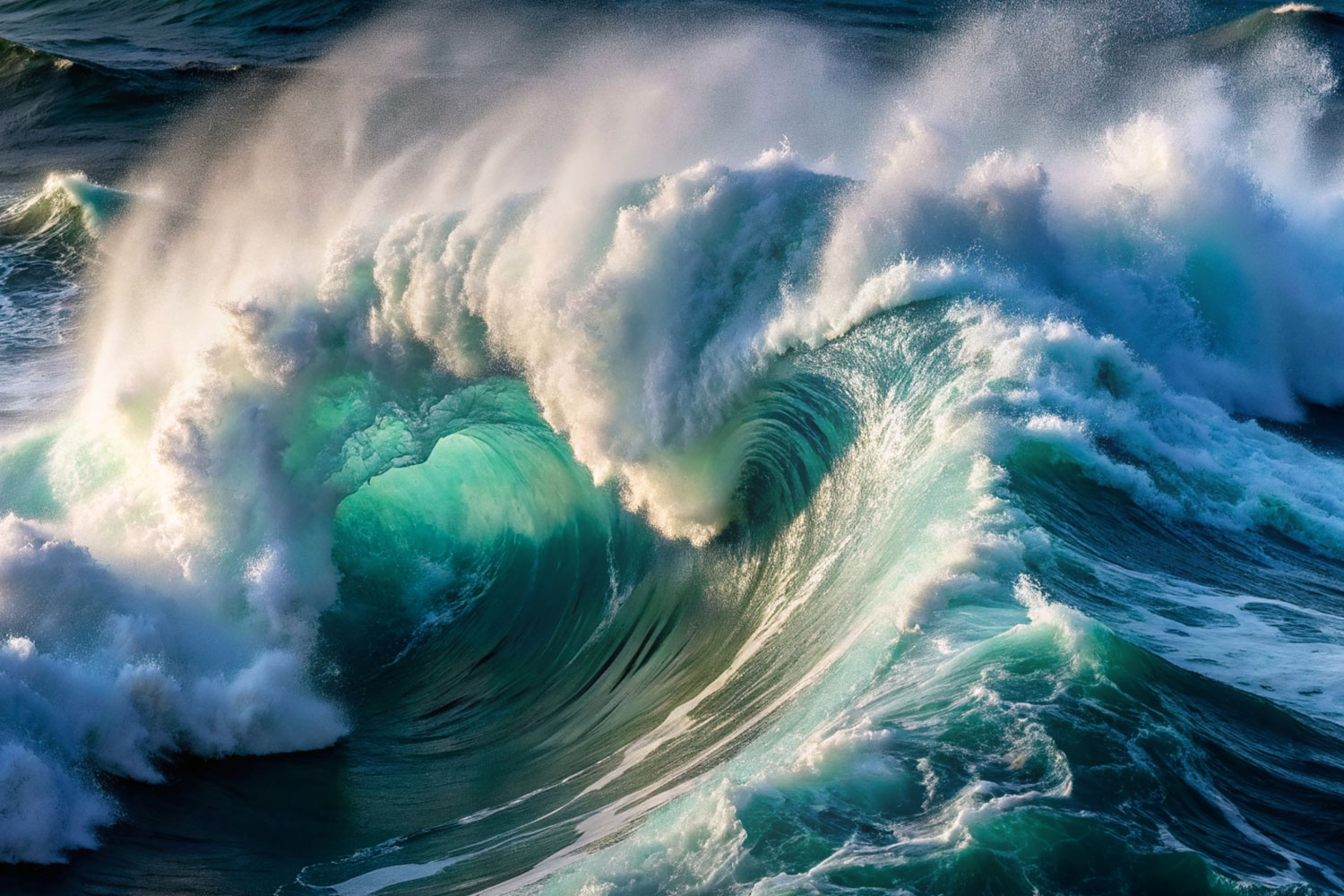Understanding the tsunami warning systems is more important now than ever, following the recent devastating 8.8-magnitude earthquake off the Kamchatka Peninsula in Russia. When the ocean is behaving and the ground is shaking unusually, knowing how to respond can mean the difference between life and death. In this article, you can learn how tsunami warnings work, what the meanings of various alert levels are, and most importantly, what immediate and perfect actions you should take for the safety and security of you and your family members.
Table of Contents
What is a Tsunami and How is it Triggered?

- Beyond the “Tidal Wave”: Tsunami is not a single “tidal wave”. But a collection of strong waves of the ocean is caused by large-scale disturbances, most commonly underwater earthquakes.
- Seismic Triggers: Large underwater earthquakes, especially those with more than 7.0 magnitudes and major vertical displacement of the seafloor, can displace a number of water columns, generating tsunamis. Subduction zones are often affected by these earthquakes, causing the ocean floor to drop and rise suddenly, pushing the overlaying water outwards and upwards.
- Other Causes: Underwater earthquakes are mostly the main reason for tsunamis; other major triggers include volcanic eruptions, landslides, and meteor impacts. These events can cause a sudden displacement of a large volume of water, generating waves that propagate across the ocean.
How Do Tsunami Warning Systems Work?
- Global Network: Tsunami warning systems utilize a global network of sea-level gauges and seismic stations to detect potential tsunamis and issue warnings in time. These systems rely on data transmission via sophisticated modeling and satellite to forecast the behavior of tsunamis and coastal impacts.
- Warning Centers: Tsunami warning systems also rely on a seismic sensor network and deep-ocean buoys (DART) to detect earthquakes and measure the changes in sea level, which are then relayed to warning centers for forecast modeling and analysis. These centers, such as the National Tsunami Warning Center (NTWC) and the Pacific Tsunami Warning Center (PTWC), issue alerts according to the simulation and data, informing emergency responders and the public about potential threats of tsunamis.
- Speed is Key: Tsunamic waves travel slower, while seismic waves travel quickly, allowing some time for warnings to be issued, especially for distant tsunamis. However, within minutes of an earthquake, the local tsunamis can arrive.
Decoding Tsunami Alerts: Watch, Advisory, and Warning
Understanding the various and multiple levels of alert is mandatory for appropriate action:
- Tsunami Watch:
Meaning: The watch area can be impacted later by a tsunami. An event or earthquake has occurred that could generate a tsunami.
Action: Monitor the emergency information based on your local area, stay informed, and prepare to take appropriate action. - Tsunami Advisory:
Meaning: A tsunami is foreseen or occurring, which could result in powerful currents or waves posing a hazard to individuals in or very close to the water. However, coastal zones are still susceptible, even though considerable inundation is not expected.
Action: Stay out of the water, away from waterways and beaches. Local officials should evacuate harbors, close beaches, and reposition ships. - Tsunami Warning:
Meaning: A tsunami with the potential to generate widespread inundation is expected, occurring, or imminent. This is one of the highest alerts, indicating powerful currents and dangerous coastal flooding.
Action: Please follow the guidelines set by local authorities and emergency management officials. Due to the risk of flooding, lower regions, as well as small coastal terrains, regions, compartments, and bays will instantly be required to be relocated to higher terrains and be positioned at elevated altitudes.
Natural Warning Signs: When Every Second Counts
Sometimes, you do not have enough time for an official warning. So you can recognize these natural signs:
- Strong, Long-Lasting Earthquake Shaking: If you are feeling an earthquake near the coast and it’s strong enough to make it difficult to stand, and the duration of it is more than 20 seconds, then there are chances of a tsunami, and it can arrive within a few minutes.
- Sudden Ocean Retreat or Rise: A rapid and noticeable drawing back of the ocean, exposing the seafloor, or a sudden, unexpected rise in the level of the sea.
- Loud Ocean Roar: The ocean is spreading a roaring sound, similar to a jet aircraft or train.
Do not wait for an official warning if you are observing and facing these signs. Immediately migrate or move to higher ground.
What to Do When Tsunami Warnings are Issued: Your Action Plan
This section is the core of your “What to Do” Guide.
- Drop, Cover, and Hold On (if an earthquake occurs): First of all, you should protect yourself from the earthquake.
- If you are residing in the area of a tsunami warning and observing any natural warning signs, you should move to high ground as far inland as possible, or at least 30 meters above the level of sea.
- Follow the evacuation routes of the tsunami if available.
- Roads may be congested or damaged, so walk if possible.
- Head further out to deeper water (at least 600 feet deep), if you are in a boat, and take this step you should take as quickly as possible.
- As this can be a huge collection of waves, so may be the first wave not the largest. Do not return to coastal areas until the official issues an “all clear”. This can take several hours or sometimes even days.
- Use a NOAA Weather Radio, battery-powered radio, or other official sources for instructions and updates.
- Prepare a kit with mandatory stuff like non-perishable food, water, a flashlight, first-aid supplies, important documents, and extra batteries.
- Discuss the plan of the tsunami with your family members, including meeting points, with everyone beforehand.
After the Tsunami: Safety and Recovery
- Continue to monitor official alerts for the “all clear”.
- Avoid damaged roads, unstable structures, and downed power lines, because flood waters can be contaminated.
- Before re-entering your home, carefully inspect it for any kind of damage.
- Ensure drinking water is safe and dispose of contaminated food.
Conclusion: Preparedness Saves Lives
Tsunamis are unpredictable and powerful, but if you understand the warning signs and know what to do, you can drastically improve the chances of your survival. Take your time, prepare and educate yourself, and become a crucial part of your community’s safety net. Stay informed, stay vigilant, and stay safe.









